Our Two Cents: Automotive heroes we’d like to be
The mission of Our Two Cents has been to seek enrichment from our staff of automotive professionals/enthusiasts on a variety of topics. Clearly, we have a diverse background, so why not put it to good use for everyone’s benefit?
For this episode, we asked our staff a very pointed question: If you could be one person from Automotive History, who would it be?
Dwight D. Eisenhower
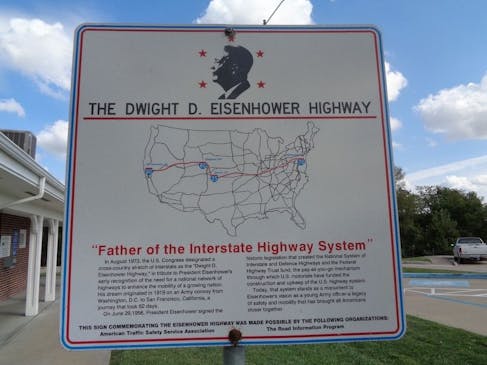
Managing Editor Stefan Lombard started us in a good, yet unexpected direction. We all like Ike, especially when we hop on the interstate to enjoy his 1956 creation for public enjoyment and national security. As Stefan said:
“The staggering number of staggering automotive personalities is, uh, staggering. But for some reason I keep coming back to Dwight D. Eisenhower. He’s the Supreme Allied Commander of the Allied Expeditionary Force one day. And he’s Head Honcho of the American Interstate System the next. The guy won a war and then paved the way for hundreds of millions of us to explore this magnificent country. Not a bad legacy!”
Enzo Ferrari
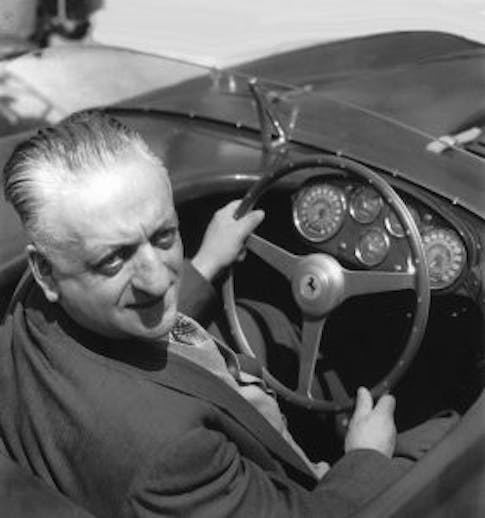
David Zenlea, Managing Editor, gives us multiple reasons to be Enzo Ferrari. Can’t disagree with any of them!
“I’d be Enzo. For all the misty eyed reasons but also because Italy in the mid-twentieth century seems like a great place to be rich, famous, and powerful. Think of the food. The wine! The villas!”
Burkhard Goeschel

Executive Editor Eric Weiner dug deep into BMW’s corporate machinations behind one of his favorite machines. And he found a very interesting person in BMW history:
“First, let me state that I don’t know that I’d want to be any of the people in the next sentence. But that said, I’d love to have been a fly on the wall in the boardroom when Burkhard Goeschel was selling BMW’s board on the Z3M Coupe. He had to explain that it was going to be as affordable as possible to adapt from the roadster, and I suspect he may have gone light on details about the ultimate design.”
David Scott

Senior Editor Brandan Gillogly has once again thrown us a delicious curveball, as he decided on the man who first drove on the moon!
“My first thoughts on this subject included some notable racing milestones. Mickey Thompson had a number of great feats, including running in excess of 400 mph at Bonneville in 1960 and driving a 427 Corvette at Daytona in 1963, but I think one of the coolest “firsts” goes to David Scott.
During the Apollo 15 mission, Astronaut David Scott became the first person to drive on the Moon when he piloted the Lunar Roving Vehicle, serious bragging rights. Pick up the pace Neil, we’ve got lunar landscapes to see!”
Shigeru Uehara
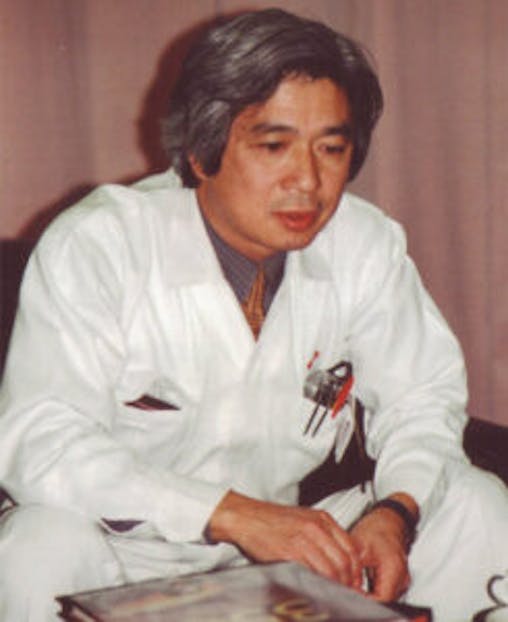
Editor Nathan Petroelje picked one heckuva automotive engineer, who has made an impact on so many vehicles…and many writers.
“I’m a sucker for a high-revving four-cylinder engine in a lightweight car that wants to pick fights with expensive exotics, so naturally, the original Acura Integra Type R is a hero of mine. The man behind it, Shigeru Uehara, is responsible for some of Honda’s greatest machines, including the Type R, but also the S2000 and the NSX. To have his tuning ability, and to be able to experience the first time that he got each of these cars ‘right’ would be incredible.”
Steve McQueen
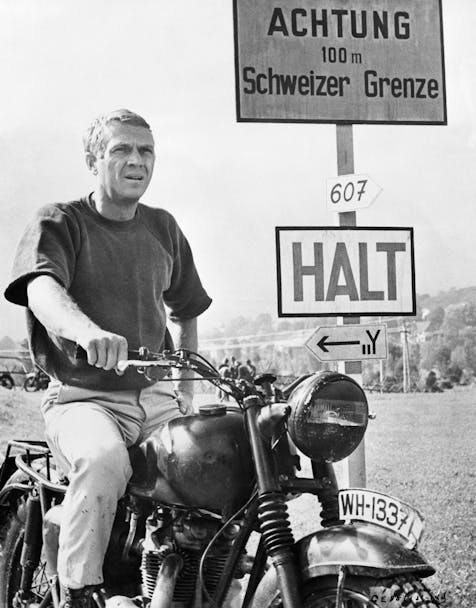
Editor Bryan Gerould picked a person near and dear to many of our hearts, but his reasoning put a unique spin on why it would be so great to be Steve McQueen:
“The aura of Steve McQueen and his life is undeniable. From The Great Escape to Bullitt to Le Mans, spending my years on earth as the leading man of some of the most iconic films in automotive history would’ve been one hell of a way to go.
Afforded the gift of knowing how memorable some scenes ultimately became, this answer is obvious for me. Plus I would’ve gotten a front-row seat watching stuntman Bud Ekins do his thing and marvel at the dude’s daring. Not a bad day at work.”
Sam Smith

Yes indeed, our Editor at Large Sam Smith, answered this question by wanting to be himself. But that’s not the candid feedback of an egomaniac, quite the contrary:
I don’t want to be someone else, I want to be me…but with a time-travel machine. I will go back to watch/help/participate in about three thousand separate moments. Not only motorsport or engineering—that’s just the stuff top of mind:
- Nuvolari’s win at the Ring in 1935 against the Nazis.
- The moment the first Model T rolled off the line.
- The day Dan Gurney won at Spa in an F1 car of his own design and build.
- When Harry Miller met Leo Goossen.
- The day Carroll Shelby realized Phil Remington was a genius.
- The day Pete Brock and John Morton and the BRE Datsun 510 team lost, then won, at Laguna Seca, in 1971.
- The first time Bonnie and Clyde left a bank robbery in a Ford V-8.
- When Gordon Murray first drove a McLaren F1. When Paul Rosche first ran an S70/2 on the dyno. And on, and on, and on…
Carroll Shelby

Steven Cole Smith, our Special Projects Editor, has met a fair number of automotive celebrities in his career. Perhaps that’s precisely why Carroll Shelby is his pick of the litter:
“Bob Lutz is a possibility, Phil Hill and Dan Gurney are others, but despite all his personal travails, including heart transplants, the man I saw having the most fun was Carroll Shelby. He was a slippery fellow in business dealings, sure, but he leaves a lasting legacy that will outlive us all. And I look good in a cowboy hat.”
Anonymous engineers?
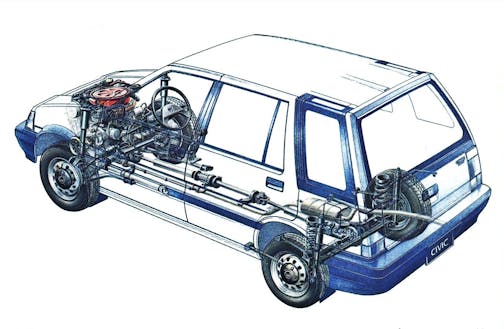
Senior Video Lead Ben Woodworth knows what he likes, but not necessarily who was behind those things. Wouldn’t it be great if we could learn about someone who made the products that had such an impact on the esteemed Mr. Woodworth?
“I don’t know much about the people behind any of the vehicles I covet. Maybe I need to watch more Jason Cammisa Revelations episodes on YouTube? (You are the king of cross promotion. Now get them to talk about me! – SM)
Anyway, most of the old cars I love are late-80s to mid-90s Hondas and Toyotas. So perhaps the person I’d choose is whomever designed Toyota’s All-Trac system. Or Honda’s RT4WD system. Or maybe the person who designed the wagons and vans those systems went into? I don’t know, as my mom always told me I should just be happy being me!”
Terry Fullerton
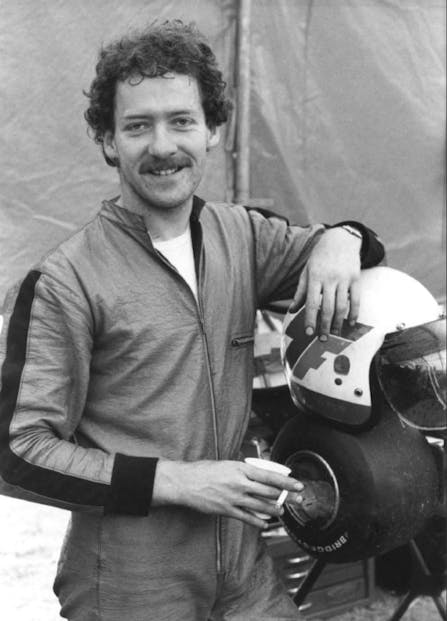
Senior Editor Eddy Eckart gives us a deep cut into the world of automotive motorsport:
“I’d like to be Terry Fullerton during his tussles with Ayrton Senna on the kart track in the late ’70s. To grasp the talent it took to regularly beat Senna in the purest form of the sport, if only for a moment, boy, that’d be something.”
Tony Kuchta

I am inclined to pick people in the same vein as Nathan Petroelje and Eric Weiner, but I generally prefer folks who are even harder to Google. Putting my money where my mouth is, here’s my story on the work of Dennis Foerschler. Stories like these are likely to never wind up in a social media mention, a PR-blessed story, or a magazine article. And that’s a shame, as such automotive professionals deserve much better.
That’s where Tony Kuchta comes into focus. Rumor has it that Ford made Kuchta take early retirement because of his team’s collective failures in the design and implementation of the 1989 Ford Thunderbird. As this book suggested, the oversized, overbudgeted Thunderbird needed a corporate scapegoat, and it would be both heartbreaking and enlightening to walk a mile in that man’s shoes. The questions I would ask myself, had I earned this opportunity:
- What did/does he feel when passing by a 1989–97 Ford Thunderbird or Mercury Cougar on the street?
- Is he tempted to pry off every Ford blue oval he sees in a Walmart parking lot?
- Where/how did he find solace?
- Did he bounce back from this setback?
- Did the experience make him a better person, eventually?
- If he could do anything differently, would he?
These questions are a touch more personal for me, as I’ve been a victim of scapegoating in a past career. Over time I realized the experience made me a better manager, a kinder person, and hopefully a more compassionate individual in my personal relationships. I would like to know exactly what Tony Kuchta did when faced with similar circumstances, and I suspect I am not alone.
Whose shoes would you want to walk a mile in? Or maybe drive 100 miles? Let us know in the comments below.
***
Check out the Hagerty Media homepage so you don’t miss a single story, or better yet, bookmark it. To get our best stories delivered right to your inbox, subscribe to our newsletters.



Harley Earl
No Ferry Porsche, yet you have Enzo. Huh!
My first thought was Zora Arkus-Duntov. Besides the Corvette stuff, he made an overhead valve head conversion for the Ford flathead V8’s
HENRY FORD! He put the World on affordable wheels!
Yes. I can’t believe he is so overlooked.
While I would typically think of automotive greats like Zora Arkus-Duntov, Harley Earl, Carrol Shelby, Dan Gurney, Mark Donahue, Roger Penske, Dayle Earnhardt, Richard Petty, Enzo Ferrari et al I wonder why the father of the Porsche family hasn’t been mentioned – Ferdinand Porsche Sr & his son, Ferdinand Anton Ernst Porsche. Where would automotive history be without a Porsche?
Seriously, you don’t include Ferdinand Porsche but include Shelby , Fullerton and Kutcha. Ridiculous list…..
#3 The Intimidator
… ’nuff said
Porsche, Lutz, Stan townes
What no Ralph Nader on the list???
Question the question, since some of us autoholics are content being ourselves. Alan Detrick (preceding) raises a good question, whether sarcastic or not, since Ralph Nader’s actions saved untold lives, and again, Nader never pointed out anything about the first generation Corvair that Sports Car Illustrated, the precursor of Car and Driver magazine, let alone other road test monthlies and buff publications, hadn’t.
But if the question is winnowing the ranging field to but one automotive luminary, you can’t go wrong with Walter P. Chrysler. Ford may’ve given the world affordable wheels, but Chrysler gave them affordable engineering. Chrysler also saw the inevitable and after the usual psychological ploys failed, as well as electric signs surrounding the walls of the workers’ cafeteria, where he ate lunch, displaying the results of ballgames around the nation, settled with the UAW, while GM’s and especially Ford’s bloody opposition became a national disgrace. Henry Ford settled in 1941 only after Clara threatened to leave him if he didn’t.
Despite only a high school education, Walter Chrysler endowed symphony orchestras, art museums, because he understood there were no walls around human intellect.
No doubt about it – the legendary Larry Shinoda!
John R. Bond.
Joe, now we’re talking. Good pick. John Bond was a degreed engineer as well as serious buff, his closing tech comments in each issue of Road & Track were always founts of unassailable wisdom. Better still, he and wife Elaine, after launching R&T in 1947 used the New Yorker as their guide, they wanting Road & Track to be a magazine for literate autoholics, which is was until it became another casualty of corporate journalism in the mid aughts.
There is, sadly, no publication of the pre-2005 Road & Track’s caliber remaining in the nation, or England, for that matter, today. Not one. RIP John R. Bond.
Good one! Like it. How about Eddie Rickenbacker (hope l spelled it right)?
Pardon typo, 4th line from end above. Meant, of course, “….which it was until…”
Hagerty doesn’t seem to offer an edit tab.
Let us not forget the one who started it all > That person lost to history who invented the wheel.
Oh yeah, Og. We see him downtown at the coffee shop now and then. He recently upgraded from stone to section of a fallen tree. Says it reduces unsprung weight.